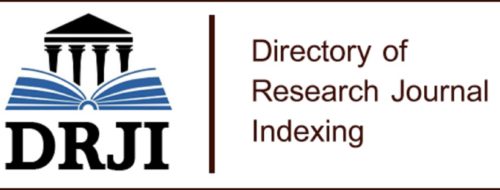Response to chemical and organic fertilization of the Tusilla corn variety under the conditions of the Ecuadorian Amazon
DOI:
https://doi.org/10.56124/allpa.v6i12.0060Keywords:
maíz, fertilización, rendimiento, área foliar, tasa de asimilación neta.Abstract
The cultivation of corn in the Amazon region of Ecuador is of great importance for food security and sustainable development, especially when considering the Tusilla Creole variety, specifically adapted to these environmental conditions. The study focused on investigating the response of the native corn variety to the application of mineral and organic fertilizers. Morphological and physiological evaluations were carried out at intervals of 15, 45 and 75 days after germination, using 5 randomly selected plants per plot. The results obtained showed that, despite the variations observed in vegetative growth and leaf development under different fertilization regimes, as manifested in plant height and leaf area, no statistically significant differences were found regarding the economic and agricultural returns.
Keywords: corn, fertilization, yield, leaf area, net assimilation rate.
Downloads
References
Ahmed, J., Almeida, E., Aminetzah, D., Denis, N., Henderson, K., Katz, J., Kitchel, H. y Mannion, P. (2020). Agriculture and climate change. Reducing emissions through improved farming practices. McKinsey & Company.
Beltrán-Pineda, M. E.y Bernal-Figueroa, A. A. (2022). Biofertilizantes: alternativa biotecnológica para los agroecosistemas. Mutis, 12(1). https://doi.org/10.21789/22561498.1771
Bravo, C., Ramírez, A., Marín, H., Torres, B., Alemán, R., Torres, R., Navarrete, H., & Changoluisa, D. (2017). Factores asociados a la fertilidad del suelo en diferentes usos de la tierra de la Región Amazónica Ecuatoriana. REDVET. Revista Electrónica de Veterinaria, 18(11), 1-16.
García C., W., López T., R., Herrera F., R. J., Tapia, A., Heredia R., M., Toulkeridis, T., & Torres, B. (2023). Floristic Composition, Structure, and Aboveground Biomass of the Moraceae Family in an Evergreen Andean Amazon Forest, Ecuador. Forests, 14(7), 1406.
García R., J. G., Mendoza E., M., Cervantes O., F., Ramírez P., J. G., Aguirre M., C. L., García P., M. A., Figueroa R., M. G., Rodríguez P., G., & Rodríguez H., S. A. (2019). Adaptabilidad de híbridos precomerciales tropicales de maíz en el Bajío de Guanajuato, México. Revista de Investigación Agraria y Ambiental, 10(1), 57-65.
Lastra, Ó. R. E., Luna, L. A. L., & Buñay, A. P. (2021). El emprendimiento rural post Covid-19: consideraciones para una recuperación económica sostenible. Universidad y Sociedad, 13(1), 443-451.
Paredes, N., Monteros A., A., Lima, L., & Ávalos, N. (2023). Sistema de producción de maíz (Zea mays L.) de la variedad Tusilla en la Amazonía ecuatoriana. En: Albán, M.G., Zambrano, J. L., Caviedes, G. M., Carvajal, F. (Ed.) (2023) Memorias del II Simposio Ecuatoriano del Maíz Ciencia, Tecnología e Innovación. Archivos Académicos USFQ, 49.
Urquilla Castaneda, A. (2023). ¿Será la Agricultura 4.0 la solución al hambre global? Realidad Y Reflexión, 1(57), 39–58. https://doi.org/10.5377/ryr.v1i57.16696
Vázquez Becalli, E., & Torres García, S. (2007). Fisiología vegetal, Primera parte. Empresa Editorial Poligráfica Félix Varela, Plaza de la Revolución, Cuba. 349 p.
Published
How to Cite
Issue
Section
License
Copyright (c) 2024 Revista de Ciencias Agropecuarias ALLPA. ISSN: 2600-5883.

This work is licensed under a Creative Commons Attribution-NonCommercial-ShareAlike 4.0 International License.


.jpg)










